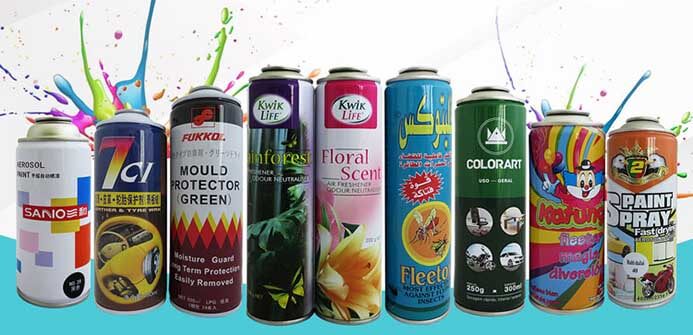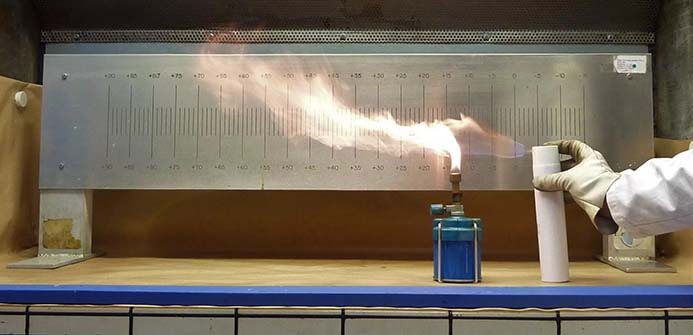5 Inspection Requirements to Aerosols In Package and Transport
04/05/2020Since its invention, production and application in the 1920s, aerosols have played an important role in people’s daily lives. It is used in a wide range of applications, such as personal items, household items, pest control items, medical items, industrial items and food products.
Aerosols have brought great convenience to human life.
The aerosol itself is a closed container, which is a dangerous goods packaging container containing propellants and other active ingredients under a certain internal pressure.
In addition, some propellants are flammable substances, such as propane, butane, dimethyl ether, etc., and some solvents are also extremely flammable, such as organic solvents, oil-based solvents.

The hazards of aerosols make them potentially hazardous throughout their life cycle, including production, packaging, storage, transport, use and disposal.
The United Nations requires hazard labeling on the inner packaging of dangerous goods and provides users with safety data sheets (SDS).
Plus, aerosol contents are chemicals, some of which are harmful to the environment, such as the greenhouse effect, destruction of the atmospheric ozone layer, and some of which are chronically toxic to humans, such as carcinogenic.

Therefore, international attention is increasingly focused on the chemicals contained in aerosols and their harm to human health and the environment.
Aerosols must also be marked with the necessary ingredients to determine whether they meet the requirements of related laws, regulations and international treaties, otherwise they will not be placed on the local market.
In summary, in order to ensure the safety of aerosol packaging and transportation, and its packaging and transportation in accordance with relevant laws and regulations, it is recommended to do the following items of aerosol testing: physical hazard, flammability, hazard classification and labeling, packaging identification, SDS.
Aerosol Physical Hazards
The physical hazards of aerosols arise mainly from the fact that aerosols are small closed pressure vessels filled with propellants, solvents and other active ingredients under a certain internal pressure.
Due to differential pressure, there are two potential hazards: aerosol can deformation and bursting.

Therefore, it is required that the aerosol can must withstand a certain pressure and that the aerosol can must be filled with limited internal pressure. Leakage of propellants, especially gaseous propellants, can be extremely flammable and may explode at a certain concentration in the air.
As a result of leaks, even small ones, “leaky gases” can accumulate in large storage warehouses and transport enclosures, leading to catastrophic accidents.
For this potential hazard, the following items should be tested: pressure bearing ability and air-tightness of empty aerosol cans. Pressure bearing ability testing includes deformation pressure and burst pressure. Air-tightness testing includes internal pressure testing of the aerosol and leak volume testing.
In addition, because the filling contents are subject to ambient temperature, it can cause changes in volume and internal pressure. Therefore, there are maximum and minimum requirements for aerosol fill rates.
At the same time, aerosols are required to withstand the requirements of high and low-temperature environments in order to prevent aerosols in extremely harsh environments from causing dangerous accidents.
With the development of technology and attention to safety details, in the future aerosols should be installed with pressure relief devices and childproof opening devices to effectively prevent the occurrence of accidental accidents.
Empty aerosol cans are mainly standard shaped metal cans, such as tinplate and aluminum aerosol cans.

At present, a variety of shaped cans, plastic cans and glass cans have been innovated. These cans need to be concerned about the safety risks more, such as shaped cans of pressure resistance, plastic cans of aging, reduced strength at high temperatures, low-temperature embrittlement, glass cans of fragile, afraid of falling and collision. These projects will gradually establish standards, standard requirements, thus protecting the safety of aerosol packaging.
Aerosol Flammability
The flammability of aerosols is an important cause of fire and explosion during transportation, use and disposal. This is because some aerosols use propane, n-butane, and organic solvents as propellants.
Many countries attach great importance to the flammability test of aerosols. According to the experience of daily testing, it is not flammable if the solvent is water based. If the solvent is oil based, or other flammable organic solvent, it is extremely flammable.

The flammability test of aerosols is mainly the chemical combustion heat (which can be calculated from the composition), ignition distance test, closed space ignition test or foam flammability test. The latter three tests should be performed with instruments.
Aerosol Hazard Classification and Labeling
Aerosols are classified according to TDG(Recommendations on the Transport Of Dangerous Goods Model Regulations) as dangerous goods of Class 2: Gases, UN 1950, with the official transport designation “Aerosols”, and are further subdivided into divisions based on the flammability and toxicity of aerosols: 2.1 flammable gases, 2.2 non-flammable non-toxic gases, 2.3 toxic gases.

Aerosols must be identified and classified prior to delivery for transport and, depending on the mode of transport, the appropriate international regulations should be selected. For example, the International Maritime Dangerous Goods Regulations (IMDG) for sea transport and the Dangerous Goods Regulations (DGR) for IA TA for air transport.
Aerosols should be classified and labeled according to GHS(The Globally Harmonized System of Classification & Labelling of Chemicals) throughout their life cycle. If the product is flammable, the flammability shall be labeled on the aerosol with “non-flammable”, “flammable” or “extremely flammable” according to the flammability level. The label should also include the results of the classification based on TDG for the delivery of transport.
Aerosol Packaging Identification
In addition to the permanent identification of each product with the manufacturer, trademark, location, lot number, date, expiry date, etc., as with ordinary goods, aerosols, as dangerous goods and as a chemical preparation, should also bear permanent ingredient identification (in particular medical aerosols, insecticide aerosols) and hazard identification (e.g. warning pictograms, hazard warnings, etc.). Marking inspection is mainly based on product standards, but can also be combined with local regulations or the requirements of the competent units for inspection.
Composition marking requires attention to the use of ozone-depleting substances (ODS) such as HFAs (whose use is gradually restricted under the Montreal Protocol) and VOC content (e.g. propane, butane, dimethyl ether) in the propellant.

For example, CARB mandates VOC reduction in new formulations, and sets VOC limits for aerosol emissions, specifying the corresponding VOC limits for aerosols and the time frame for implementation.
Ingredient labeling is also increasingly required for product formulation transparency, not only for propellants and solvents, but also for some hazardous and critical ingredients.
For example, the EU REACH regulation requires the transmission of SDS for chemical preparations along the supply chain, and the supplier should also inform the competent authorities, distributors and downstream users if the article contains hazardous ingredients.
The United States and Canada’s Specialty Consumer Goods Association, in conjunction with the Clean Detergent Association, is conducting an open communication initiative on product ingredients.
Aerosol SDS
SDS is a comprehensive legal document on the hazards and handling of chemicals provided by chemical suppliers to downstream users.

It outlines the hazards of chemicals to human health and the environment and provides information on how to safely handle, store and use the chemicals.
It contains 16 items, including physicochemical parameters, explosive properties, health hazards, safe use and storage, spill disposal, first aid measures and relevant laws and regulations.
Aerosols are chemical dispensers and dangerous goods that may contain hazardous chemicals. Therefore, as aerosols are introduced into the market, suppliers should also provide an SDS to downstream users to guide them in the safe use of aerosols and to deal with emergencies.
SDS provides a variety of detailed hazard descriptions, precautions and emergency measures to provide safe working instructions for workers involved in handling, packing and transportation.
Recent Posts
-
2 Ways You Can Take to Avoid Aerosol Can Corrosion Leaks
 After many years of scientific research, it has been found that HFCs, which used to be used as aerosol propellants, have a certain destructive effect on the ozone layer, so the production of CFCs in Europe and the United States is restricted by law.
After many years of scientific research, it has been found that HFCs, which used to be used as aerosol propellants, have a certain destructive effect on the ozone layer, so the production of CFCs in Europe and the United States is restricted by law. -
23 Aerosol Propellant Losses Will Cost You Money and Ruin Your Plant
 Did you know that aerosol propellants can be lost in 23 places? It is not only the propellant gas and money that are lost, but also the possibility of destroying the plant. Since there is almost no way to monitor and measure the use of propellants, it is very easy to lose them
Did you know that aerosol propellants can be lost in 23 places? It is not only the propellant gas and money that are lost, but also the possibility of destroying the plant. Since there is almost no way to monitor and measure the use of propellants, it is very easy to lose them -
9 Key Factors to Consider will Make You Select the Right Aerosol Valves
 Aerosols have played an important role in people's daily lives since their invention, production and application in the 1920s. It has a wide range of applications, such as personal care, household care, pest control, medical solutions, industrial care and food, etc., bringing great convenience to human life.
Aerosols have played an important role in people's daily lives since their invention, production and application in the 1920s. It has a wide range of applications, such as personal care, household care, pest control, medical solutions, industrial care and food, etc., bringing great convenience to human life.
Maximize Your ROI
by Investing in Our Cost-Effective Aerosol Filling Machines.
Contact Us
Copyright© 2019 Dawsom Mechanical & Electrical Co., Ltd. All Rights Reserved.



